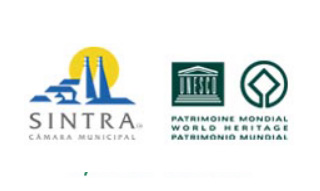The palace was designed by the architects Thomas James Knowles (father and son) and built in 1858, having been commissioned by Sir Francis Cook, Viscount of Monserrate.
The design of the gardens took advantage of the unique microclimates of the mountains to produce a magnificent park in which over 3,000 exotic species can still be seen today.
Monserrate Palace is in Monserrate Park, in the parish of São Martinho.
This palace, the Cook familys summer residence, was constructed on the ruins of the neo-Gothic mansion built by the English merchant, Gerard de Visme, who built the first palace of Monserrate. William Beckford leased the property in 1793, carrying out works on the palace and starting to create a landscape garden. Like the other palaces in the region, such as the Pena Palace, this is an example of Portuguese Romanticism. Since 1978 it has been classified as a Building of Public Interest.
Monserrate Palace was visited by Lord Byron, the Anglo-Scottish poet and leading figure in the Romantic Movement. He visited the estate in 1809 and sang of its beauty in the poem "Childe Harold's Pilgrimage". Monserrate Palace also makes a brief appearance in the TV mini-series, Gullivers Travels (1996).
Walking among the trees from all over the world, waterfalls and ponds, a romantic mysticism enshrouds the visitor.
http://www.sintraromantica.net/en/monuments/monserrate-palace#sigFreeId8f64aac484
Four kilometres from Sintra’s historic centre, and bearing witness to the eclectic tastes of the 19th century, are the peerless Palace and Park of Monserrate, where the exotic vegetal motifs of the building’s interior decoration extend harmoniously to the gardens outside. The lawn in front of the palace offers you the chance to enjoy a well-earned rest as you set about discovering one of the richest botanical gardens and one of the most beautiful Romantic landscapes ever created in Portugal.
The estate of Monserrate was rented by Gerard de Visme (1789), a wealthy English merchant, who built a house there in the neo-Gothic style. William Beckford then subleased Monserrate in 1793-1794, but, in 1809, when Lord Byron visited the property, the house was already in ruins. The estate’s sublime appearance was a source of inspiration for the poet, who sang of the beauty of Monserrate in his poem Childe Harold’s Pilgrimage, after which it became obligatory for foreign travellers to visit the property. This was especially true for English visitors, who made vivid descriptions of Monserrate in their countless travel reports and illustrated it in many engravings.
One of the most famous visitors was Francis Cook, another extremely wealthy English industrialist, who was later decorated by King Luís with the title of Viscount of Monserrate and subrogated the estate in 1856. The effective acquisition of the property took place in 1863, with the architect James Knowles beginning the work of transforming what remained of the house built by de Visme. Displaying distinctly medieval and oriental-style influences, the decoration of the Palace of Monserrate makes it, along with the Palace of Pena, one of the most important examples of Romantic architecture in Portugal.
Over the years, the surrounding gardens have welcomed plant species from all over the world. Organised according to geographical areas (perhaps most notably that of Mexico), the gardens reflect the diverse origins of the plants, composing different scenic effects along the paths that lead you through ruins and hidden nooks and crannies, past lakes and waterfalls. It was, therefore, thanks to the intervention of the painter William Stockdale and the master gardener Francis Burt, but above all the romantic spirit of Francis Cook, that the Park of Monserrate grew to become what it is today. In the various gardens, as you walk along winding paths and commune with spontaneously growing species from the region (such as strawberry trees, holly bushes and imposing cork-trees), you will find surprisingly contrasting scenery, with the sudden appearance of age-old araucarias and palm-trees, and tree ferns from Australia and New Zealand, as well as agaves and yuccas recreating a corner of Mexico. This walk through the botanical delights of five continents also offers you camellias, azaleas, rhododendrons and bamboos, evoking memories of a Japanese garden.
The estate and the Palace were bought by the Portuguese State in 1949.
The Park and Palace of Monserrate were classified as a Property of Public Interest in 1993, and were included in the Cultural Landscape of Sintra, which has been classified by UNESCO as World Heritage since 1995.
In 2000, responsibility for the management of the estate was transferred to Parques de Sintra, which embarked upon a profound programme of recovery and restoration work. This has made it possible to reopen the Palace to the public, while returning the Park’s historic gardens to their former glory.
In 2013, the Park of Monserrate was distinguished with a European Garden Award under the category of the “Best Development of a Historic Park or Garden”.
Timetable and Prices:
http://www.parquesdesintra.pt/planear-a-sua-visita/horarios-e-precos/
Estrada de Monserrate,
2710-405 Sintra
Tel.: 21 923 73 00
Fax. 21 9237350
E-mail: info@parquesdesintra.pt | npa@parquesdesintra.pt
www.parquesdesintra.pt
Parque de Monserrate
38º 47’ 30,70” N
9º 25’ 9,09” W


 Português
Português
 English (UK)
English (UK)







